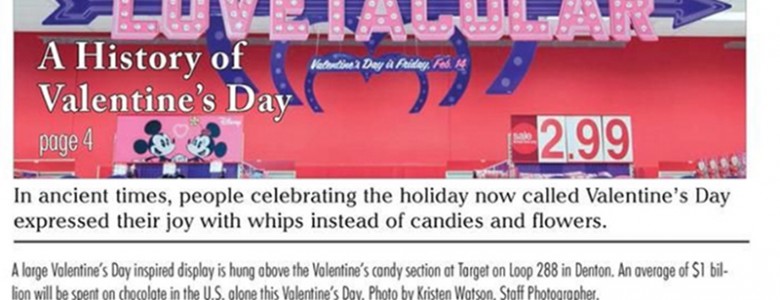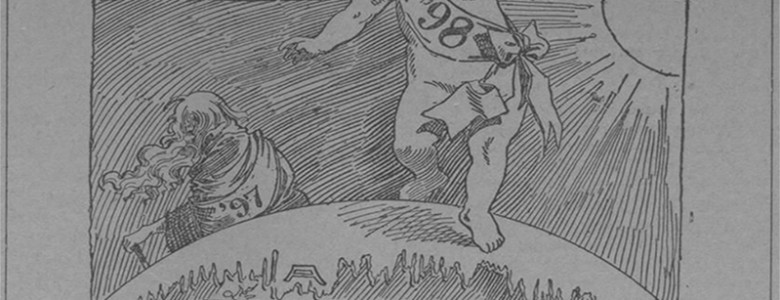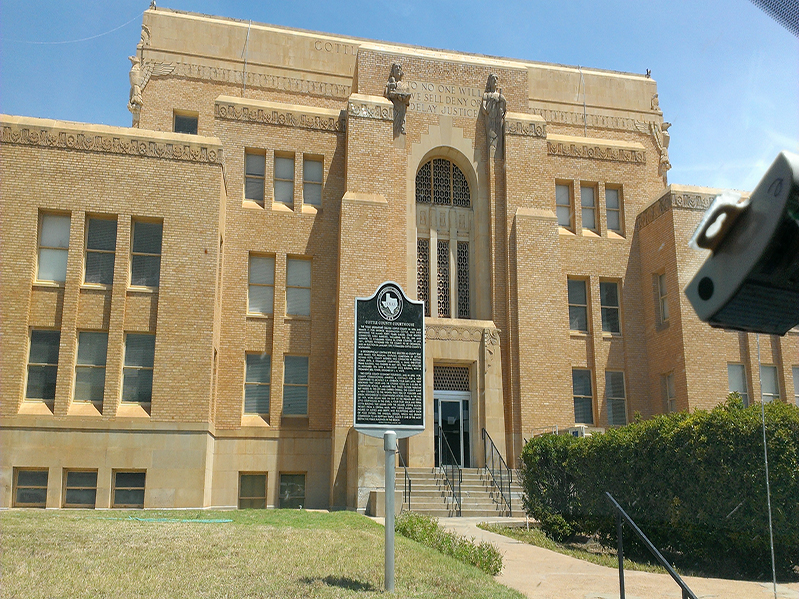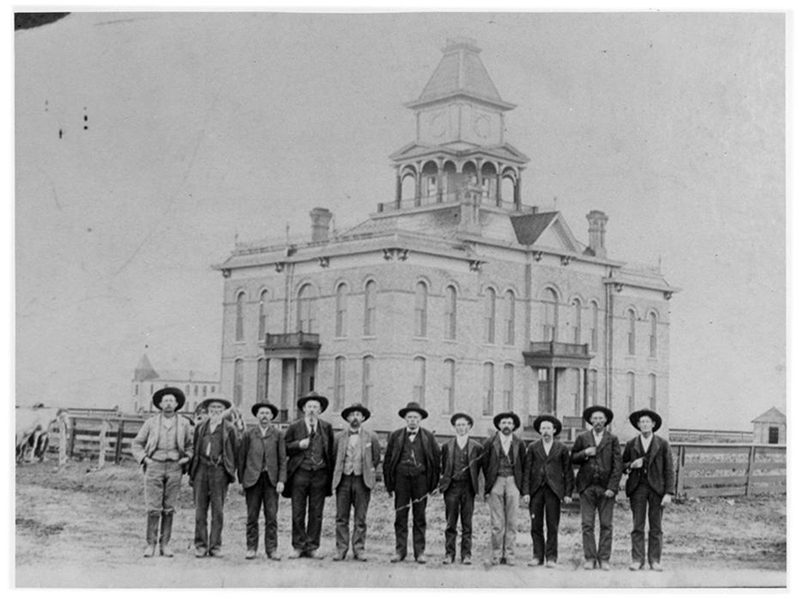Have you ever thought to buy a pack of Valentine’s cards to give out to your friends and loved ones? If you hop into your time machine and set it for January 22, 1866, E. H. Cushing might help you out. Cushing published the Tri-Weekly Telegraph in Houston for a little over a decade, while on the side he ran a wholesale stationery business. Cushing, in this 1866 advertisement, offers Valentine cards sold in lots of $5, $10, or $15. Before you hop in your time machine, be sure you get the correct form of currency, and remember the following conversions:
| Currency in 1866* |
Equivalent Value in 2015 |
| $5.00 |
$72.45 |
| $10.00 |
$144.90 |
| $15.00 |
$217.35 |
(*These calculations are based on the Dave Manual 2015 Inflation Calculator, which states $1 in 1866 is equivalent to $14.49 now.)
Unfortunately, E. H. Cushing didn’t specify how many Valentines you’d end up with once you paid $72, $144, or $217, but because his stationery business was wholesale, you’d probably wind up with enough to give to your friends and some left over to sell on EBay as time-travel Valentine cards. (This would help fund the uranium fuel for your time machine.)
As you’re time traveling, it might behoove you to stop next door to visit Galveston, on February 24, 1857, where you will get to observe the peach trees blooming in the approaching spring warmth after a brutal winter. Valentine’s Day for this newspaper editor represented a return to clement weather and easier agriculture. Galveston was booming by 1857, with two weekly and one daily newspaper, and plans for another weekly newspaper, to serve the city.
However you choose to celebrate Valentine’s this year, time time out to research how it’s been celebrated in history!
The Digital Newspaper Team is pleased to say farewell to 2014 and welcome 2015 by wishing all our readers a Happy New Year!
For a great article about New Year’s food traditions, see this issue of the Texas Jewish Post, from September 9, 2010. To see some fun photographs and read about New Year’s traditions from across the world, take a peek at The Denison Press issue from December 14, 1945. If you could hop into your time machine, you might want to visit Austin for December 31st, 1852, where the South-Western American announced a concert on New Year’s Eve. But if you’re going to fire up the old time machine, you couldjoin the Bastrop mule race, which got publicity from as far away as Houston, from The Houston Advertiser, on Decmber 31st, 1856.
Mule races, good food, concerts–however you choose to celebrate, we hope you enjoy a great New Year!
As the Texas Digital Newspaper Program prepares to celebrate 2.5 million pages on November 6, 2014, we welcome multiple new grant awardees and newspaper titles!
- The Polk County Enterprise: The county seat, Livingston, Texas, has received a grant to digitize its newspaper, beginning in 1892 and moving up to 1965. This span of years will represent such famous historic figures from Polk County, including former governor of Texas, William P. Hobby, after whom the Houston Hobby International Airport was named.
- The Carl and Mary Welhausen Public Library has received a grant to digitize multiple newspaper titles representing Yoakum, Texas, and DeWitt and Lavaca Counties. Yoakum is also known as the Leather Capital of Texas and the Hub City of South Texas!
- The Cleveland Journal & Illustrated Paper Boy emerge from Cleveland, Texas, and are being digitized by the Austin Memorial Library. Cleveland’s first structure was a church built in 1854, around which later settlement began in the 1870s. In addition, the Illustrated Paper Boy is one of the more unique titles we’ve run across in Texas newspapers.
- Refugio, Texas, is the home of the Dennis M. O’Connor Public Library, which has received a grant to digitize many of its county newspaper titles. Refugio, Texas, is near the coast, and it is the birthplace of famed Texas Rangers pitcher, Nolan Ryan.
- The Mercedes New Tribune and the Mercedes Enterprise will be digitized through a grant received by the Dr. Hector P. Garcia Memorial Library. Located in the Rio Grande Valley, Mercedes is the home town of Tejano music singer Elida Reyna, whose family moved to the community when she was eight years old, and who won the Latin Grammy Award in 2010.
We wish to thank all of the libraries who have contributed to historical preservation in Texas through their hard work in preserving and making these newspapers accessible to the public via the Texas Digital Newspaper Program.
This past weekend, I had the very great honor to travel to Paducah, Texas, and meet up with their newspaper publisher, Jimmye Taylor, and the Cottle County librarian, Becky Tucker. Jimmye contacted me last week, out of the blue, asking if we could digitize her newspaper, The Paducah Post. She was retiring and would soon have to shut down the office after over 100 years of publication–almost half of which she oversaw–and she knew that her newspapers needed to be preserved somehow. When I arrived in Paducah, the first thing I planned to do was call Jimmye or Becky. However, my phone didn’t work. I stepped into a CPA office on the square, just down the corner from the publishing office and across the street from the library. The very kind lady who loaned me her cell phone asked, hopeful, “Are you meeting with Jimmye to buy the newspaper?” The other folks in her office nodded their heads, also optimistic. Although I was disappointed to answer that no, I was only here to pick the newspapers up to archive and digitize them, I told them that we would do our best at UNT to preserve the community’s history by preserving the newspaper both physically and digitally, and by making it openly, freely available on The Portal to Texas History. We all agreed about the significant role of a newspaper in a community, particularly for a county seat.
Paducah is a town of 1,169 people and is the county seat for Cottle County. The Paducah Post has represented the community’s history for over a century, depicting both daily life of its citizens and historic events of the county and region.
Near my desk right now is the 1952 bound volume of issues. As I open up the May 22nd, 1952 issue, I see an announcement about evangelist Fred Ross visiting the town; an accolade about the high school’s newspaper, The West Wind, winning a prominent award; an article about 1952 elections being contested; and multiple entries about cattle, cotton, and the weather. Although one newspaper issue taken out of context only contains so much information, the entire run of a newspaper, representing daily life of a town, just blows my mind. Paducah’s population in 2000 was nearly 1500. As of 2012, it was 1169. This newspaper illustrates this population decline over the past decade. Tom Abraham, a 1932 graduate of Texas Tech University, was later a philanthropist and civic leader in Canadian, and he found his first job in Paducah, after graduation. Mr. Abraham was a prominent figure in Canadian civics, and he is an easily-locatable name on The Portal to Texas History. William “Bill” Heatley, “The Duke of Paducah,” served in the Texas House of Representatives for 28 years, was born and raised in Cottle County. These people and more will be prominent figures in The Paducah Post, and it is due to the work of Jimmye Taylor and Becky Tucker, as well as other citizens of Paducah, that the newspaper will be preserved and easily searchable. Because these materials will be available on The Portal to Texas History, the names of the prominent citizens and events fom Paducah’s history will be attached, through faceted navigation, to other primary sources objects on the Portal that discuss these same people and happenings.
It is people like Jimmye and Becky who teach me about how important it is to save newspapers, and to create long-term access to towns’ histories. I am grateful to be able to do what I do–to work on a team of the wonderful people who build The Portal to Texas History. I’m equally grateful to all the groups across Texas who recognize how important it is to work together, to collaborate toward building something larger than all of us, in a way that ensures long-term access and long-term preservation. Thank you to the wonderful folks of Paducah, a beautiful community with a rich history!
Image information: I took the photograph of the present-day courthouse on May 16, 2014. The original Cottle County Courthouse photograph is available on the Portal:
[Courthouse and Cottle County Officials]. The Portal to Texas History. http://texashistory.unt.edu/ark:/67531/metapth38469/. Accessed May 20, 2014.
Now that warm weather is finally returning in the Northern hemisphere, we can spring into spring. Here on the Digital Newspaper Team, we’ve been dusting off papers for upload. Thanks to partners like University of Texas at San Antonio, Southwestern University, the Old Jail Art Center, and newspaper publishers themselves, new titles you’ll see preserved and freely available in the Texas Digital Newspaper Program include The Greensheet, The Albany News, The Hallettsville Rebel, The Megaphone, early Czech newspaper, Obzor, and The San Antonio Register.
As we spring forward, we on the Newspaper Team especially enjoy the flowers, butterflies, bunny rabbits, and puns, and newspapers serve as windows to the season for us (since our offices don’t have windows). We share pictures from collections like the beautiful full-color PDFs from the Canadian Record and witticisms about cleaning your spring–or at least your well if you have no spring–as recommended in the San Marcos Free Press. Such hand-drawn artwork as that which appears in The Meridian Tribune, depicting springtime and life in the 1930s, gives us a window in time.
Yesterday, a person stopped by my office to ask if there are copies of the NT Daily at the Willis Library because she had a homework assignment to study information in newspapers. She got very excited when I showed her the North Texas Daily/Campus Chat Newspaper Collection, which is freely available on The Portal to Texas History. As with all newspapers on the Portal, the NT Daily/Campus Chat issues are fully text-searchable, with highlighting of search terms, and can be zoomed in for closer reading, which you can see in action on this December, 7, 1966, issue of The Campus Chat, which discusses the mascot name selection process for Scrappy.
UNT’s student newspaper was first published on November 1, 1916, under the title The Campus Chat. The first editor-in-chief was Mary Watlington, and Ira S. Bradshaw was the assistant editor-in-chief. The paper was published once per month during semesters. By the late 1940s, the paper was distributed on a semi-weekly basis, on Wednesdays and Fridays. In 1970, the newspaper’s name was changed to The North Texas Daily, which is now printed four days a week in the Fall and Spring while classes are in session, and once a week during the Summer.
The NT Daily has had a long history of winning awards, starting in 1937-38, when The Campus Chat entered a competition sponsored by the Associated Collegiate Press. In that year the paper received the second highest honor rating, First Class. In April of 1940, The Campus Chat was awarded its first All-American rating by the National Scholastic Press Association. The editor of the Chat at that time was Ray Edwards. By the time of the name change to The North Texas Daily, the paper had won 53 All-American ratings and five Pacemaker awards from the Associated Collegiate Press.
All issues of the NT Daily and Campus Chat are freely available for anyone–historians, genealogists, students, or anyone who loves reading newspapers!
Newspapers provide windows into daily life throughout history. Digital newspapers allow us to easily track how people celebrated the end of the year, across many years and many miles.
The Denison Press article, “Winter Solstice Period of Many Ancient Rituals,” explains, “The Winter Solstice, when the sun swings toward the earth once more, has been celebrated as a festival of some sort by the various peoples of the earth since, and even prior to, the recording of history.” In Texas, these rituals range from stately and glamorous to community-building to just plain peculiar.
- Early Texans celebrated Christmas while living in a warmer climate during the winter months. The November 24, 1838, issue of the Telegraph and Texas Register reveals that Velasco celebrated with daytime horse races that concluded with evening masked balls over a series of five days.
- Soldiers stationed at Fort Hood mulled over their New Year’s resolutions in the December 21, 1973, issue of the Fort Hood Sentinel. Quitting smoking seemed to be the most frequent resolution for folks that year.
- Two decades later, from Houston, the Rice Thresher advertises the “Christmas, Hanukkah, and Kwanzaa celebration for the Second Annual Holiday Festival,” which would be “celebrated with buffet dinner and dessert, along with photos with Santa.”
- Children from the town of Canadian, in the Texas Panhandle, eagerly write to Santa with their wishes, one of whom hopes for “a palm pilot and real beagle puppies” in the December 23, 2004 Canadian Reporter.
- And the University of North Texas’ Holidaily 2007 poses the timeless question: Who would win in a battle of the Santas? Santa Claus or Santa Anna? (You’ll have to read the comic to find out!)
However you celebrate the end of 2013 and beginning of 2014, the Digital Newspaper Team wishes you joy!
“The Oldest and Best Read County Seat Weekly in the Panhandle,” the Claude News, is now accessible on The Portal to Texas History. Through the hard work of the Richard S. and Leah Morris Memorial Library, and through the generous support of the Tocker Foundation, newspapers from Armstrong County’s seat, Claude, are available from across six decades. Originally named Armstrong City, Claude was founded in 1887 by the Ft. Worth and Denver City Railway, and it was very shortly thereafter renamed for Claude Ayers, the engineer who brought the first train through the town. With ties to Charles Goodnight and to Hollywood, Claude, Texas, has a big past for such an unassuming community! Three films, The Sundowners, Hud, and Sunshine Christmas were filmed in Claude. The Claude News was the weekly newspaper produced when the Claude Argus and the Goodnight News merged at the turn of the 20th-century.
Thanks to The Handbook of Texas for its rich biography of Claude!
As you plan shopping lists for Thanksgiving, an easy place to find old recipes that will make your Thanksgiving meal new is the Texas Digital Newspaper Program.
Pickled eggs are an easy Thanksgiving table appetizer, can be transported to a friend’s house, and are safe to leave out on the table for hours. This Telegraph and Texas Register recipe dates from November 9, 1842–before Thanksgiving was an official holiday in America! This recipe was intended to accompany meats stored through the winter as a nourishing yet tasty side dish, in an era before refrigeration existed to keep food from spoiling over long periods of time.
The Schulenburg Sticker bring us “The Kitchen Cabinet” column, from November 18, 1921. This recipe column suggests that “a few pieces of nicely smoked trout added to a potato salad give a flavor that is especially appetizing.” These recipes take advantage of common foods that would have been in a 1921 Texas kitchen in the late autumn. “Usually two or three vegetables with the meat course is considered enough.” Ranging from suggestions on cooking sweet potatoes attractively, to fruit- and coffee-flavored desserts, to recipes for different varieties of squash that were readily available in the Texas Hill Country during the 1920s, any of Nellie Maxwell’s recipes would add a unique experience to a large family Thanksgiving.
“Meet the Bean Family,” from the November 25, 1943, issue of The Tulia Herald, states, “[Dried beans] are food pinch hitters for meat, fish, eggs, and cheese when supplies of these No. 1 protein foods are short.” Written during a time of war rationing, this bean recipe list illustrates an era and a region when resources were limited and when sensible planning of meals was a necessity. These recipes could add a unique twist to any 2013 Thanksgiving feast.
All issues of The Meridian Tribune from 1935 have been uploaded as the Texas Digital Newspaper Program’s first newspaper title digitized on our new scanner. Master images are 24-bit, full-color TIFFs, from which OCR has been generated and derivatives are viewable as full newspapers, such as this issue from April 5, 1935, on The Portal to Texas History. Through a Tocker grant awarded to the Meridian Public Library, over 60 years of The Meridian Tribune will be included on the Texas Digital Newspaper Program.
Meridian serves as the county seat of Bosque County. It was selected as the county seat in 1854 due to its location at the center of the county the early founders had mapped out, according to the Texas State Historical Association’s Handbook of Texas Online.
These newspapers are fully-text searchable and will be accessible to researchers for years to come.




